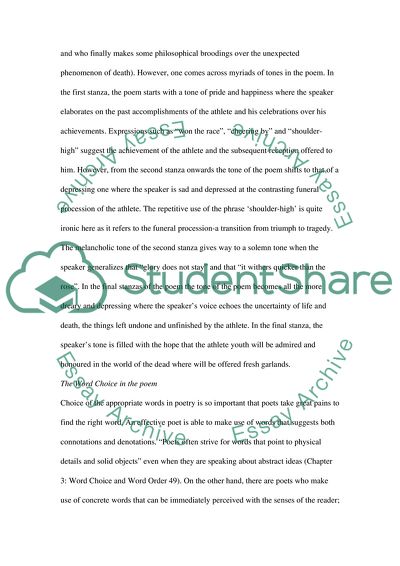Cite this document
(Analysis of To an Athlete Dying Young Assignment, n.d.)
Analysis of To an Athlete Dying Young Assignment. Retrieved from https://studentshare.org/literature/1739225-analysis-of-to-an-athlete-dying-young
Analysis of To an Athlete Dying Young Assignment. Retrieved from https://studentshare.org/literature/1739225-analysis-of-to-an-athlete-dying-young
(Analysis of To an Athlete Dying Young Assignment)
Analysis of To an Athlete Dying Young Assignment. https://studentshare.org/literature/1739225-analysis-of-to-an-athlete-dying-young.
Analysis of To an Athlete Dying Young Assignment. https://studentshare.org/literature/1739225-analysis-of-to-an-athlete-dying-young.
“Analysis of To an Athlete Dying Young Assignment”, n.d. https://studentshare.org/literature/1739225-analysis-of-to-an-athlete-dying-young.


